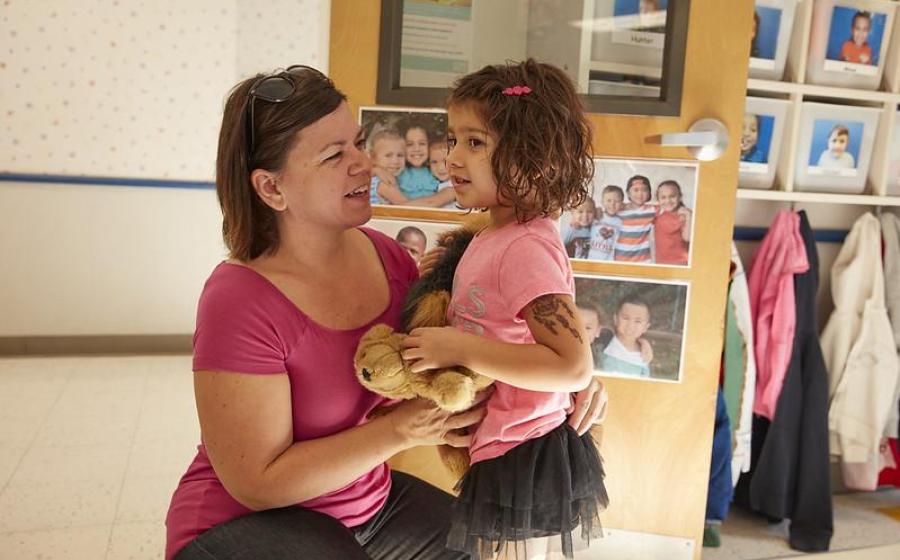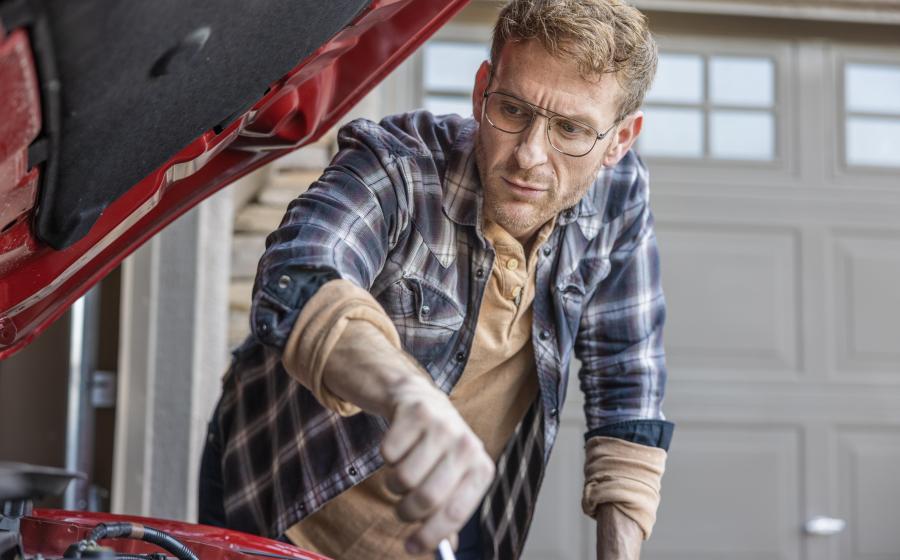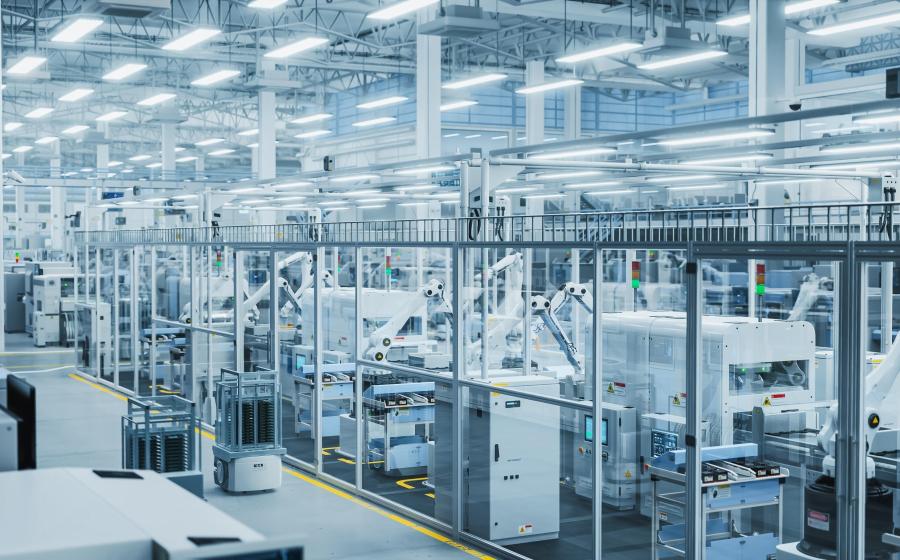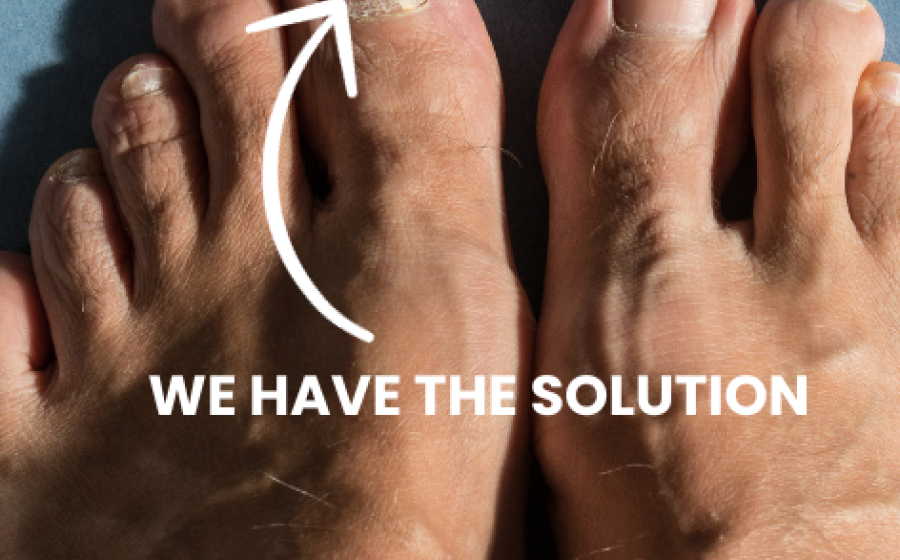Tips for Having Meaningful Conversations with Your Kids
(NewsUSA) - As children return to school, families can employ various strategies to turn mundane questions such as, "How was your day?" into meaningful conversations. These tips can help children open up, easing any jitters or anxieties they may be feeling.
- As children return to school, families can employ various strategies to turn mundane questions such as, "How was your day?" into meaningful conversations. These tips can help children open up, easing any jitters or anxieties they may be feeling.
"You don’t have to set aside a specific time in your day to have impactful discussions with your child,” said Ariel Bronson, KinderCare Inclusion Services Advisor. “You can take advantage of small moments in your everyday schedule to build on your relationship with your child, leading to deeper conversations and connection over time.”
- Set the scene and get involved. Take time during your family's daily routine to spark conversations with your child, whether during a commute, mealtime, bath time or an afternoon walk. Conversations in trusted, familiar environments will help your child feel more at ease and more willing to open up to you.
- Leave questions open-ended and use patience. Allow your children to lead the conversation and use their answers to build on it. Listen patiently instead of jumping into problem-solving. The goal is to build a conversation around connection rather than control. The more you learn about your child’s day and are involved in their schedules, the more topics you have to discuss.
- Use focused prompts to keep conversations going. If your discussions still lead to dead ends, try focusing on a specific topic. What are your child’s interests? For example, you could use art class or a sporting practice as a thought starter. “What did you do at [insert activity] today?” This will help spark a memory for your child, allowing you to build on their response. You can also encourage your child to reflect on their day. “What was something you learned, liked, saw or noticed today?” Help guide your child through each topic.
- Encourage your child to connect with their emotions. Deepen your conversation by asking questions like, “What was something unexpected that happened today? When did you feel excited? How were you brave?” Do the same for questions related to their peers, such as, “When did you notice a classmate being kind today?” This will allow your child to recognize and understand how feelings impact us.
- Explore non-verbal conversations. If your child doesn’t want to talk or has limited speech capabilities, try starting a family journal and leave prompts for your child to write about and a place for them to ask you questions. This tactic is also helpful when navigating more challenging topics. For younger children, you could have them draw what they felt during the day or something that they enjoyed as a way to share.
For more conversational tips on how to jumpstart impactful conversations with children, visit KinderCare.com.


 - You’ve seen the commercials. Psoriasis treatments are everywhere. So it would follow that people with psoriasis can also be found everywhere, right? In theory, yes. About 3 percent of all people will develop psoriasis – a chronic, inflammatory disease that can have severe consequences and comes with an unwelcome increased risk of several related diseases. But what the numbers don’t show is the impact that shame and stigma can have and the unintended consequences of those feelings.
- You’ve seen the commercials. Psoriasis treatments are everywhere. So it would follow that people with psoriasis can also be found everywhere, right? In theory, yes. About 3 percent of all people will develop psoriasis – a chronic, inflammatory disease that can have severe consequences and comes with an unwelcome increased risk of several related diseases. But what the numbers don’t show is the impact that shame and stigma can have and the unintended consequences of those feelings.

 - From classic shapes to modern technologies, the progression of eyewear continues to see advancements, driven by the desire for improved comfort, durability, and style. Frames were often heavy and uncomfortable, but over the decades, eyewear has transformed significantly, influenced by technological advancements, and changing consumer demands.
- From classic shapes to modern technologies, the progression of eyewear continues to see advancements, driven by the desire for improved comfort, durability, and style. Frames were often heavy and uncomfortable, but over the decades, eyewear has transformed significantly, influenced by technological advancements, and changing consumer demands.
 - Cutting back on single-use plastic is trending across America. A recent Ipsos survey indicates that 81 percent of American consumers support the increase of reusable packaging and that trend is increasingly more prevalent among grocery shoppers.
- Cutting back on single-use plastic is trending across America. A recent Ipsos survey indicates that 81 percent of American consumers support the increase of reusable packaging and that trend is increasingly more prevalent among grocery shoppers.
 - This year, the National Oceanic and Atmospheric Administration (NOAA) predicts an 85% chance of an above-normal Atlantic hurricane season. So far, this has held true with storms Beryl and Debby already making landfall. Hurricanes can be catastrophic for any business, but particularly for rural small businesses. While there are many things that need to be done to be prepared for hurricanes, one important item is ensuring connectivity. In the aftermath of these storms, infrastructure is frequently damaged, and internet access is unavailable. One connectivity option is satellite internet service. Its reliability can provide backup communications, ensuring optimal operations and connectivity after even the most severe storms.
- This year, the National Oceanic and Atmospheric Administration (NOAA) predicts an 85% chance of an above-normal Atlantic hurricane season. So far, this has held true with storms Beryl and Debby already making landfall. Hurricanes can be catastrophic for any business, but particularly for rural small businesses. While there are many things that need to be done to be prepared for hurricanes, one important item is ensuring connectivity. In the aftermath of these storms, infrastructure is frequently damaged, and internet access is unavailable. One connectivity option is satellite internet service. Its reliability can provide backup communications, ensuring optimal operations and connectivity after even the most severe storms.
 - The U.S. economy remains dynamic and robust, but continued focus on advanced manufacturing is needed to cement U.S. leadership in industries of the future, according to experts at the
- The U.S. economy remains dynamic and robust, but continued focus on advanced manufacturing is needed to cement U.S. leadership in industries of the future, according to experts at the 
 - Los niños están regresando a la escuela y el otoño se acerca rápidamente, lo que significa que la temporada de enfermedades respiratorias está a la vuelta de la esquina. Los expertos en salud instan a que ahora es el momento de pensar en cómo reducirás tu riesgo de enfermedades graves por COVID-19 y gripe en los próximos meses, incluyendo
- Los niños están regresando a la escuela y el otoño se acerca rápidamente, lo que significa que la temporada de enfermedades respiratorias está a la vuelta de la esquina. Los expertos en salud instan a que ahora es el momento de pensar en cómo reducirás tu riesgo de enfermedades graves por COVID-19 y gripe en los próximos meses, incluyendo 
 - Children are returning to school and fall is fast approaching, which means respiratory illness season is right around the corner. Health experts urge that now is the time to think about how you will reduce your risk of severe illness from COVID-19 and flu in the months ahead, including
- Children are returning to school and fall is fast approaching, which means respiratory illness season is right around the corner. Health experts urge that now is the time to think about how you will reduce your risk of severe illness from COVID-19 and flu in the months ahead, including 
 - Say hello to the uninvited guest: toenail fungus, the ultimate party crasher for your confidence! It’s not just about feeling uneasy; it’s like a fashion police for your feet, dictating a strict ‘no’ to those fabulous sandals and making you think twice before exposing your toes. And let’s talk about those doctor discussions - brace yourself for some seriously cringeworthy moments!
- Say hello to the uninvited guest: toenail fungus, the ultimate party crasher for your confidence! It’s not just about feeling uneasy; it’s like a fashion police for your feet, dictating a strict ‘no’ to those fabulous sandals and making you think twice before exposing your toes. And let’s talk about those doctor discussions - brace yourself for some seriously cringeworthy moments!
 - State fairs are an opportunity for families, friends and communities to celebrate on an annual basis. Along with the yearly tradition, the state fair is an opportunity to shine a spotlight on the important role U.S. agriculture plays in the global economy. The state fair is a place for young farmers to showcase their expertise in the food and farm industry while also learning the value and role of risk management.
- State fairs are an opportunity for families, friends and communities to celebrate on an annual basis. Along with the yearly tradition, the state fair is an opportunity to shine a spotlight on the important role U.S. agriculture plays in the global economy. The state fair is a place for young farmers to showcase their expertise in the food and farm industry while also learning the value and role of risk management.


